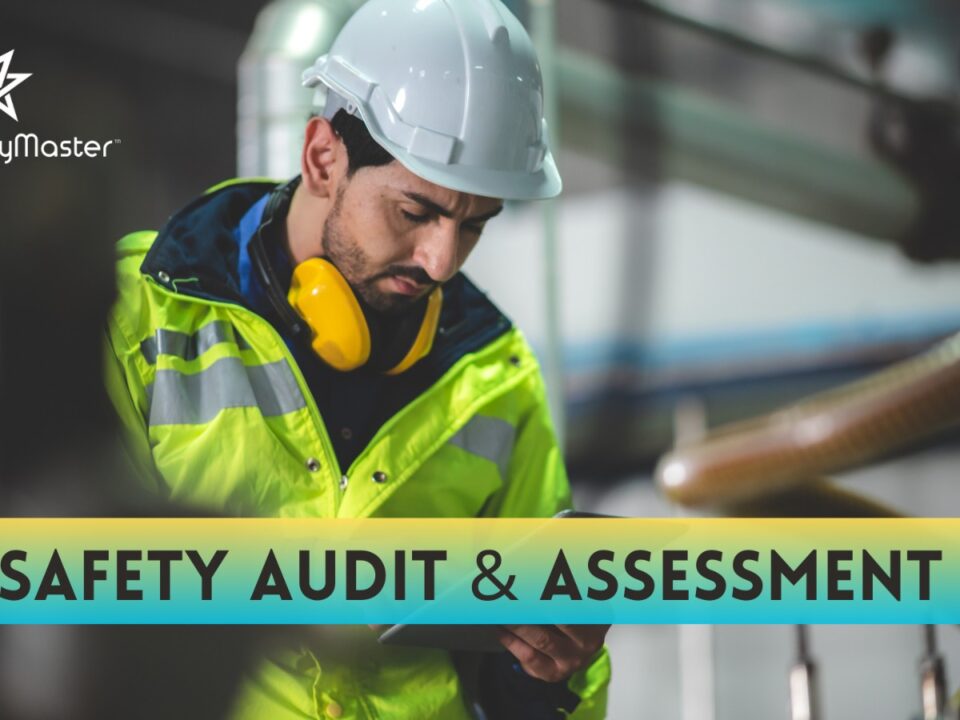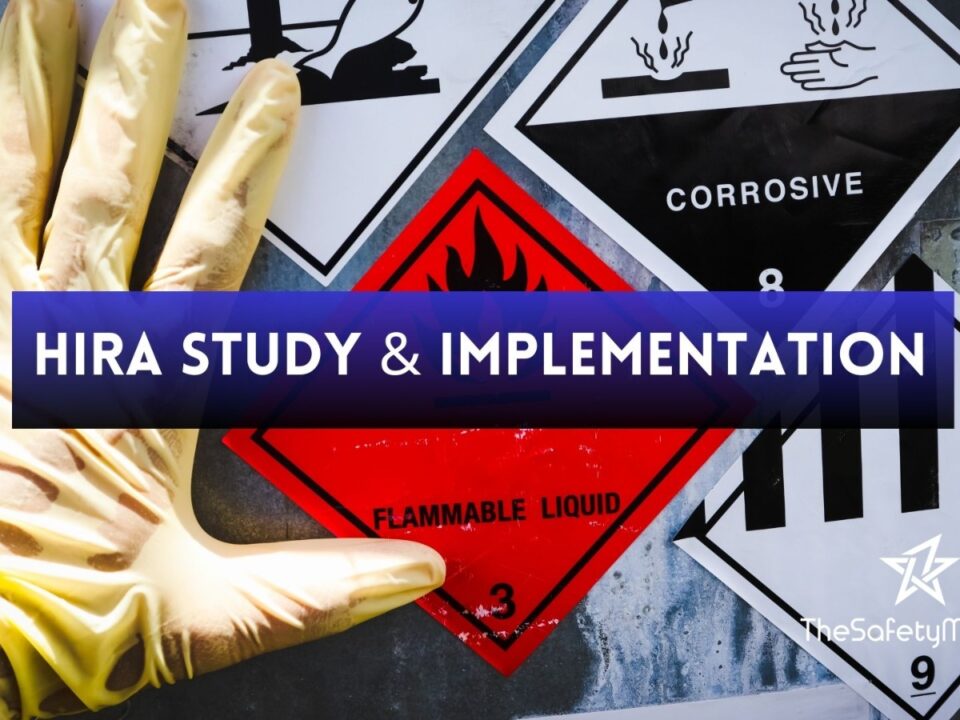Phosgene Gas Safety: Preventing Exposure in Chemical Manufacturing Plants

Noise Hazards in Construction: Protecting Hearing Health for Workers
February 20, 2024
Struck-By Accidents: Preventing Injuries from Falling Objects and Moving Equipment – The Safety Master
February 22, 2024Introduction
Chemical manufacturing plants are prone to various risks, among which exposure to hazardous gases poses a significant threat to worker safety. Phosgene gas, in particular, demands strict precautions due to its severe health implications. In this article, we delve into the intricacies of phosgene gas safety, exploring preventive measures to mitigate exposure risks effectively.
What is Phosgene Gas?
Phosgene gas, a colorless and highly toxic substance, is a byproduct commonly encountered in chemical manufacturing processes. Despite its industrial utility, phosgene’s lethal nature demands utmost caution in handling and storage.
Understanding Phosgene Gas
Chemical Properties of Phosgene Gas
Phosgene (COCl2), characterized by its pungent odor reminiscent of freshly cut hay, exhibits unique chemical properties. Understanding its molecular structure and behavior is crucial for devising safety protocols.
Sources of Phosgene Gas
Phosgene gas can originate from various industrial processes, including the production of certain plastics, pesticides, and solvents. Identifying potential emission sources is fundamental for preemptive safety measures.
Hazards of Phosgene Exposure
Exposure to phosgene gas poses severe health risks to individuals and environmental concerns due to its toxic properties.
Health Risks of Phosgene Gas Exposure
Inhalation or dermal contact with phosgene can lead to respiratory distress, pulmonary edema, and in extreme cases, fatality. Recognizing symptoms of exposure is critical for timely intervention.
Environmental Impact
Beyond human health implications, phosgene emissions can contribute to air and water pollution, endangering ecosystems. Sustainable manufacturing practices are indispensable for minimizing environmental repercussions.
Preventing Phosgene Exposure
Efficient preventive strategies encompass a multifaceted approach integrating engineering controls, administrative measures, and personal protective equipment (PPE).
Engineering Controls
Implementing engineering solutions such as ventilation systems and gas detectors aids in mitigating phosgene gas dispersion within the facility, reducing exposure risks.
Administrative Controls
Establishing robust protocols for handling, storage, and transportation of phosgene, coupled with comprehensive employee training programs, fosters a culture of safety consciousness.
Personal Protective Equipment (PPE)
Equipping personnel with appropriate PPE, including respiratory masks, protective clothing, and goggles, serves as a frontline defense against phosgene exposure during operational activities.
Emergency Response
In the event of phosgene exposure incidents, prompt and effective emergency response protocols are imperative to minimize harm and facilitate recovery.
First Aid Measures
Administering immediate first aid interventions such as providing respiratory support and medical attention significantly enhances the prognosis for affected individuals.
Decontamination
Thorough decontamination procedures following exposure incidents prevent secondary contamination and safeguard the surrounding environment.
Conclusion
Safeguarding against phosgene gas exposure demands a comprehensive approach encompassing preventive measures, emergency preparedness, and ongoing vigilance. By prioritizing safety protocols and fostering a culture of risk awareness, chemical manufacturing plants can mitigate the inherent dangers associated with phosgene gas, ensuring a secure working environment for all stakeholders.
Introduction
Chemical manufacturing plants are prone to various risks, among which exposure to hazardous gases poses a significant threat to worker safety. Phosgene gas, in particular, demands strict precautions due to its severe health implications. In this article, we delve into the intricacies of phosgene gas safety, exploring preventive measures to mitigate exposure risks effectively.
What is Phosgene Gas?
Phosgene gas, a colorless and highly toxic substance, is a byproduct commonly encountered in chemical manufacturing processes. Despite its industrial utility, phosgene’s lethal nature demands utmost caution in handling and storage.
Understanding Phosgene Gas
Chemical Properties of Phosgene Gas
Phosgene (COCl2), characterized by its pungent odor reminiscent of freshly cut hay, exhibits unique chemical properties. Understanding its molecular structure and behavior is crucial for devising safety protocols.
Sources of Phosgene Gas
Phosgene gas can originate from various industrial processes, including the production of certain plastics, pesticides, and solvents. Identifying potential emission sources is fundamental for preemptive safety measures.
Hazards of Phosgene Exposure
Exposure to phosgene gas poses severe health risks to individuals and environmental concerns due to its toxic properties.
Health Risks of Phosgene Gas Exposure
Inhalation or dermal contact with phosgene can lead to respiratory distress, pulmonary edema, and in extreme cases, fatality. Recognizing symptoms of exposure is critical for timely intervention.
Environmental Impact
Beyond human health implications, phosgene emissions can contribute to air and water pollution, endangering ecosystems. Sustainable manufacturing practices are indispensable for minimizing environmental repercussions.
Preventing Phosgene Exposure
Efficient preventive strategies encompass a multifaceted approach integrating engineering controls, administrative measures, and personal protective equipment (PPE).
Engineering Controls
Implementing engineering solutions such as ventilation systems and gas detectors aids in mitigating phosgene gas dispersion within the facility, reducing exposure risks.
Administrative Controls
Establishing robust protocols for handling, storage, and transportation of phosgene, coupled with comprehensive employee training programs, fosters a culture of safety consciousness.
Personal Protective Equipment (PPE)
Equipping personnel with appropriate PPE, including respiratory masks, protective clothing, and goggles, serves as a frontline defense against phosgene exposure during operational activities.
Emergency Response
In the event of phosgene exposure incidents, prompt and effective emergency response protocols are imperative to minimize harm and facilitate recovery.
First Aid Measures
Administering immediate first aid interventions such as providing respiratory support and medical attention significantly enhances the prognosis for affected individuals.
Decontamination
Thorough decontamination procedures following exposure incidents prevent secondary contamination and safeguard the surrounding environment.
Conclusion
Safeguarding against phosgene gas exposure demands a comprehensive approach encompassing preventive measures, emergency preparedness, and ongoing vigilance. By prioritizing safety protocols and fostering a culture of risk awareness, chemical manufacturing plants can mitigate the inherent dangers associated with phosgene gas, ensuring a secure working environment for all stakeholders.



